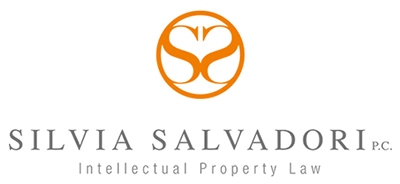{1 minute to read} Inventors and small businesses that meet certain financial thresholds and other criteria may be eligible for free legal assistance in preparing and filing a patent application. The Patent Pro Bono Program is a nationwide network of independently operated regional programs that match volunteer patent professionals with financially under-resourced inventors and small […]

On January 7, 2019 the United States Patent and Trademark Office (USPTO) issued a Revised Patent Subject Matter Eligibility Guidance in the Federal Register Notice. The Guidance revises the procedures for determining whether a patent claim or patent application claim is directed to a judicial exception (laws of nature, natural phenomena, and abstract ideas) under […]
{1:35 minutes to read} On July 11, 2016, the United States Patent & Trademark Office (USPTO) initiated a pilot program called The Post-Prosecution Pilot Program (P3). Under this program, once an applicant files an after final response, a panel of examiners, including the examiner of record, will conduct a conference with the applicant to review […]
{3:35 minutes to read} On May 5, 2016, the USPTO published new patent eligibility examples, including two examples related to diagnostic methods (examples 29 and 31). Example 29 is directed to a method for diagnosing and treating Julitis (a hypothetical disease). According to the hypothetical, Julitis is an autoimmune disease causing chronic inflammation of the […]
{1:35 minutes to read} In the recent case Halo Electronics, Inc. v. Pulse Electronic, Inc., the Supreme Court rejected the dual objective/subjective test of Seagate (the subjective requirement for “objective recklessness”) as too rigid and inconsistent with the statutory language. The previous standard required the patent owner to prove that the accused infringer was objectively […]
{1:35 minutes to read} On April 8, 2016, the United States Court of Appeals, Federal Circuit, decided Genetic Technologies Limited v. Merial L.L.C., Bristol-Myers Squibb Company. The issue of this case related to the discovery that, in human DNA, certain coding alleles are always linked with certain non-coding alleles. Thus, searching for the non-coding sequences corresponding […]
{1:40 minutes to read} In evaluating the case Magna Electronics, Inc. v. TRW Automotive Holdings Corp., I pose an important question: Is this the end of the patent term adjustment? What are the facts of the case? The patent at issue (U.S. Patent No. 7,339,149, hereinafter “the ‘149 patent”) was filed November 16, 1999, by […]
{2:15 minutes to read} In Avid Technology, Inc. v. Harmonic, the Federal Circuit found that Harmonic did not infringe on the patent and that the district court—based on a statement made during the prosecution of the underlying patent—had erred in construing a claimed term too narrowly. During prosecution, to distinguish the claimed subject matter over […]
{3 minutes to read} In the recently decided case Pfizer v. Lee, the Federal Circuit affirmed the decision of the U.S. District Court for the Eastern District of Virginia, upholding the lower court’s ruling that the patent term adjustment calculation should stop the clock from running against the United States Patent & Trademark Office (USPTO) […]
{3:30 minutes to read} A recent case has been decided, and it is significant because it might define the standard for evaluating a patent under the American Invents Act (AIA) post-grant proceedings. On Friday, January 15, 2016, the Supreme Court granted certiorari to Cuozzo Speed Technologies, which asked the court two questions: Whether the Court […]